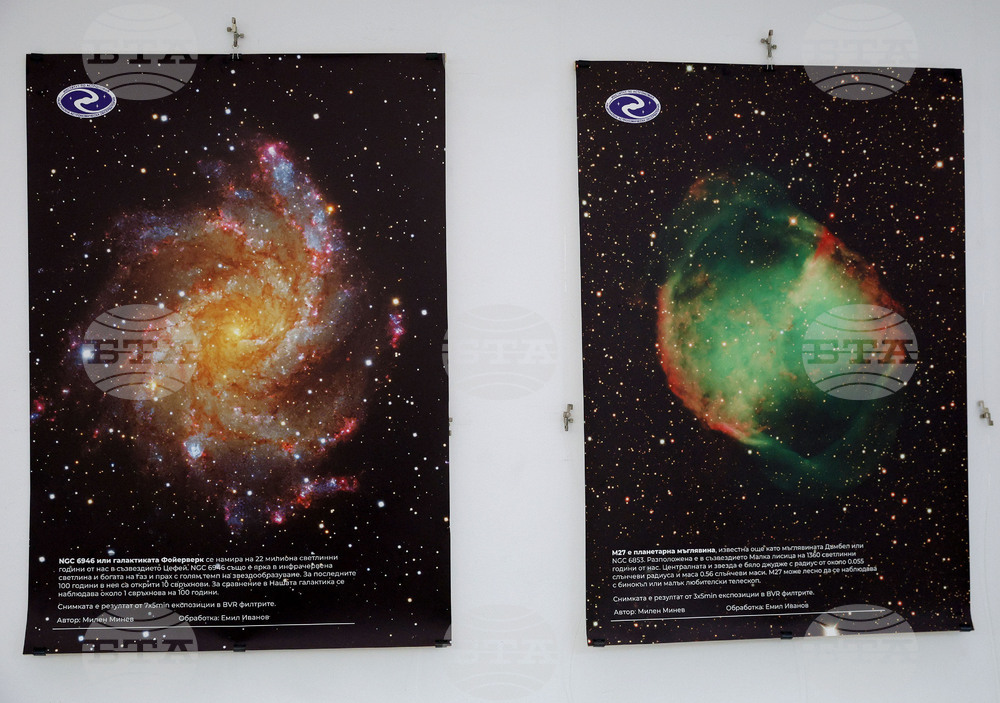site.btaExhibition in Varna Displays Nebulae, Stars, Galaxies Captured with Rozhen's New Telescope


An exhibition of images of stars, nebulae, galaxies and star clusters, taken with the new 1.5 m aperture telescope of the Rozhen National Astronomical Observatory (NAO), was opened in Varna on Friday. The exhibition is on display at the Nicolaus Copernicus National Observatory and Planetarium and can be viewed throughout the summer season, the observatory's director, Snezhina Dimitrova said. Assistant professor Dr. Milen Minev is the author of the photos. Astronomer Emil Ivanov also helped capture the images, she added.
In a BTA interview, Minev said that NAO's new telescope can capture objects at distances of up to 10 billion light years, recalling that one light year equals some 9.7 trillion kilometers. The most distant objects that astronomers can observe are blazars. Blazars are active galactic nuclei containing supermassive black holes that absorb matter. Processes are formed there that emit powerful light, Minev explained. He clarified that a direct image of a black hole cannot be obtained with an optical telescope because it is an object that does not emit any light. A few years back, with the help of radio telescopes, for the first time in its history, mankind was able to see images of black holes, Minev added.
The images included in the exhibition were captured during the first tests of Rozhen's new telescope. These images are useful in promoting astronomy but carry almost no scientific information, Minev noted. "Now, when the telescope starts its real work, we will do different research and there will not be much time for beautiful images," he said. In his words, with the new equipment, Bulgarian astronomers will be able to study transits of exoplanets as well as variable stars. Bulgarian astronomers are awaiting the outburst of the TCrB star, which could happen in 2024 or in 2025 at the latest. It has been found that this star explodes every 80 years on average, explained Minev, adding that so far only 5 stars that explode periodically have been found. The theory is that in these cases it is a pair of stars orbiting each other, with one of them accumulating matter, the astronomer explained. Over time, thermonuclear processes are triggered on its surface and the matter explodes, while its core remains intact. The process then starts all over again, Minev explained.
/DT/
Additional
news.modal.image.header
news.modal.image.text
news.modal.download.header
news.modal.download.text
news.modal.header
news.modal.text





